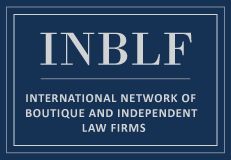
 With 75-80% of startup companies failing, new founders can feel a lot of pressure to get everything right. There are many business problems that can hamper success, such as a lack of capital, unclear business plans, or a poor product/market fit. However, there are also two points in the actual process of developing a business where mistakes can create unnecessary struggles. Simple adjustments in a timeline can help a startup to avoid these two mistakes and increase the chances of creating a successful company.
With 75-80% of startup companies failing, new founders can feel a lot of pressure to get everything right. There are many business problems that can hamper success, such as a lack of capital, unclear business plans, or a poor product/market fit. However, there are also two points in the actual process of developing a business where mistakes can create unnecessary struggles. Simple adjustments in a timeline can help a startup to avoid these two mistakes and increase the chances of creating a successful company.
- Receiving Customer Feedback Too Late
Once you have a good idea, it seems logical to expand and build out the idea, create a brand, then try and find customers. However, this method requires a great deal of resources before you understand what your customers actually want and need. Instead, it is better to get customers involved in the process early. Once you have an idea, start talking to a wide variety of people. Identify who may be interested in buying your product and who wouldn’t be. Understand whether people find your idea useful, necessary, or superfluous. Potential customers can clarify what they truly need in a product and what alternatives that are currently using. Early conversations with customers can provide insight on price points and useful marketing tactics. Beginning with an idea and then receiving feedback will make the building process much more effective and you will be able to understand and tailor your brand to a known demographic. This process confirms early on whether your idea is actually viable. It can save valuable resources and help focus a young company
- Assessing How Much It Costs to Acquire a Customer Too Late
Customer acquisition is an exciting phase – you are seeing your product in use, your brand is being marketed, you are receiving feedback, and potentially are generating a revenue stream. Success seems achievable! However, this is an important point to take a step back and assess the long term viability of customer acquisition. Once you have developed a business and marketing plan, look at how much it costs to acquire customers and compare it to the customer’s anticipated lifetime value. If you spend $80 to acquire a customer, but they will only ever spend $75 on your product, then you may quickly run into problems. An early assessment of your customer acquisition costs can help to determine whether your marketing is effective or targeting the right audience.
Gennari Aronson’s lawyers understand that client success depends on much more than carefully crafted legal documents. Our lawyers are experienced in leveraging their expertise and contacts to help our clients find solutions, refine ideas, and focus business strategies. Contact us today to see how we can help contribute to your venture’s success.




